
The Majestic Cerro Tronador
Discover the awe-inspiring beauty of Cerro Tronador, where thunderous glaciers, stunning landscapes, and adventure await in Argentina's Patagonia region.
Cerro Tronador, named for the thunderous sounds of its collapsing glaciers, is a must-see destination in Argentina's Patagonia region. Straddling the border between Argentina and Chile, this magnificent stratovolcano stands at an impressive 3,491 meters and offers some of the most breathtaking views in the Andes. The mountain is famous for its seven glaciers, which visitors can explore through guided tours or solo hiking adventures. The lush forests, serene lakes, and diverse wildlife add to the allure of this natural wonder, making it a paradise for nature lovers and adventure seekers alike. One of the highlights is the Ventisquero Negro, or Black Glacier, which sits at the base of Cerro Tronador. Its dark, volcanic rock-stained ice is a stark contrast to the surrounding snow-capped peaks, creating a unique and mesmerizing landscape. Whether you're there for the hiking, the stunning views, or simply to soak in the tranquility, Cerro Tronador promises an unforgettable experience.
Local tips in Cerro Tronador
- Visit in the summer months (December to February) for the best weather and trail conditions.
- Bring layers of clothing; weather can change rapidly in the mountains.
- Don't forget your camera to capture the spectacular vistas and unique features like the Black Glacier.
- Consider hiring a local guide for a richer, more informative experience.
- Check with local authorities for trail conditions and any necessary permits.
The Majestic Cerro Tronador
Cerro Tronador, named for the thunderous sounds of its collapsing glaciers, is a must-see destination in Argentina's Patagonia region. Straddling the border between Argentina and Chile, this magnificent stratovolcano stands at an impressive 3,491 meters and offers some of the most breathtaking views in the Andes. The mountain is famous for its seven glaciers, which visitors can explore through guided tours or solo hiking adventures. The lush forests, serene lakes, and diverse wildlife add to the allure of this natural wonder, making it a paradise for nature lovers and adventure seekers alike. One of the highlights is the Ventisquero Negro, or Black Glacier, which sits at the base of Cerro Tronador. Its dark, volcanic rock-stained ice is a stark contrast to the surrounding snow-capped peaks, creating a unique and mesmerizing landscape. Whether you're there for the hiking, the stunning views, or simply to soak in the tranquility, Cerro Tronador promises an unforgettable experience.
When is the best time to go to Cerro Tronador?
Iconic landmarks you can’t miss
Parque Nacional Nahuel Huapi
Explore the natural wonder of Parque Nacional Nahuel Huapi, a stunning national park in Argentina’s Patagonia, offering breathtaking landscapes and endless outdoor adventures.
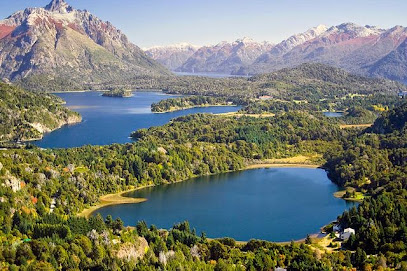
Puerto Pañuelo
Explore the beauty of Puerto Pañuelo, a stunning marina in Bariloche that serves as your gateway to Patagonia's breathtaking landscapes and adventure.

Cathedral Our Lady of Nahuel Huapi
Discover the stunning Cathedral of Our Lady of Nahuel Huapi, a Gothic treasure in Bariloche surrounded by breathtaking Andean landscapes.

Museo del Chocolate Havanna
Experience the sweet side of Bariloche at Museo del Chocolate Havanna, where chocolate history and indulgence meet in a captivating environment.

Ventisquero Negro
Discover the breathtaking beauty of Ventisquero Negro, a stunning glacier in San Carlos de Bariloche, perfect for hiking and nature exploration.

Parque Nahuelito
Explore Parque Nahuelito, a unique theme park in Bariloche, Argentina, featuring life-sized dinosaur replicas and stunning natural landscapes.

Cerro Llao Llao
Explore the breathtaking beauty of Cerro Llao Llao, a stunning nature preserve in Bariloche, Argentina, perfect for hiking and wildlife watching.

Pampa Linda
Explore Pampa Linda: Your gateway to adventure in the stunning landscapes of Argentina's Río Negro Province, with breathtaking views of Cerro Tronador.

Mirador Lago Gutierrez
Experience breathtaking views and serene landscapes at Mirador Lago Gutierrez, a top observation deck in San Carlos de Bariloche, Argentina.

Cascada Los Alerces
Explore the breathtaking Cascada Los Alerces, a stunning waterfall in San Carlos de Bariloche, surrounded by lush forests and majestic mountains.

Old Volcano Caverns
Uncover the geological wonders of Old Volcano Caverns in Río Negro, a must-visit tourist attraction for nature lovers and adventure seekers.
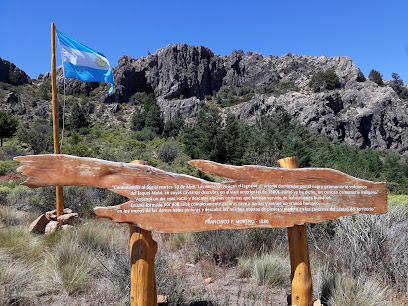
Mirador Bahía Lopez
Experience breathtaking panoramic views at Mirador Bahía López, a must-visit destination in Río Negro Province, Argentina, perfect for nature lovers and photographers.

Puente Romano
Experience the breathtaking beauty and historical significance of Puente Romano, a key landmark in San Carlos de Bariloche, Argentina.

Hotel Tronador
Experience the beauty of Parque Nacional Nahuel Huapi at Hotel Tronador, your perfect base for adventure and relaxation in Argentina's stunning landscapes.

Tronador
Explore Tronador, a stunning mountain peak in Los Lagos, Chile, where adventure meets breathtaking natural beauty.

Unmissable attractions to see
Cathedral Our Lady of Nahuel Huapi
Experience the breathtaking beauty and spiritual serenity of Cathedral Our Lady of Nahuel Huapi in Bariloche, a must-visit cultural gem.

Piedras Blancas
Discover the enchanting Piedras Blancas in Bariloche, where thrilling winter sports meet stunning Andean landscapes, perfect for families and adventure lovers alike.

Museo del Chocolate Havanna
Discover the enchanting world of chocolate at Museo del Chocolate Havanna in Bariloche, where history meets taste in an unforgettable experience.

Parque Nahuelito
Explore Parque Nahuelito, a thrilling theme park in Bariloche featuring life-sized dinosaur replicas, exciting rides, and stunning natural landscapes.

Playa Bonita
Discover the natural beauty of Playa Bonita, a stunning beach destination in San Carlos de Bariloche, perfect for relaxation and outdoor adventures.

Lago Gutierrez Beach
Experience the serene beauty of Lago Gutierrez Beach in Río Negro, Argentina, where adventure meets tranquility amidst breathtaking landscapes.

Playa Del Toro
Discover the natural beauty of Playa Del Toro in Parque Nacional Nahuel Huapi, a must-visit destination for nature lovers and adventure seekers in Neuquén Province, Argentina.

Bahía Serena
Discover the serene beauty of Bahía Serena in San Carlos de Bariloche, where pristine waters meet breathtaking mountain views.

Francisco Moreno Museum of Patagonia
Explore the fascinating history, culture, and natural wonders of Patagonia at the Francisco Moreno Museum in San Carlos de Bariloche.
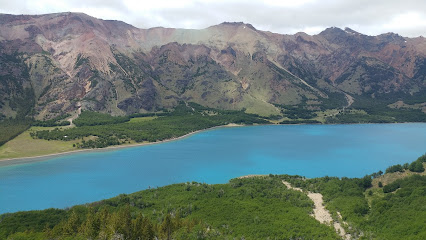
Playa Sin Viento
Experience the tranquil beauty of Playa Sin Viento in San Carlos de Bariloche, a stunning beach surrounded by nature's splendor.

Old Volcano Caverns
Explore the Old Volcano Caverns in Río Negro, Argentina – a stunning geological wonder filled with ancient beauty and adventure.

Mirador Bahía Lopez
Experience the stunning natural beauty and panoramic views at Mirador Bahía Lopez, a must-visit attraction in Río Negro Province, Argentina.

Playa del viento
Discover Playa del Viento, a serene beach in San Carlos de Bariloche, perfect for relaxation, water sports, and breathtaking natural beauty.

Río el Manso y el pileton
Explore the tranquil beauty of Río el Manso y el Pileton, a natural paradise in San Carlos de Bariloche, where adventure meets serenity amidst stunning landscapes.

Parapente BRC Bariloche
Experience breathtaking paragliding with Parapente BRC in Bariloche, Argentina, soaring above stunning landscapes including the Andes mountains and pristine lakes.

Essential places to dine
La Fonda del Tío
Experience authentic Argentine cuisine at La Fonda del Tío in San Carlos de Bariloche - where every meal tells a story.

Kunstmann
Discover Kunstmann Brewpub in Bariloche - where artisanal craft beers meet stunning mountain views.

Confitería Giratoria Cerro Otto
Discover breathtaking views and exquisite Argentine cuisine at Confitería Giratoria Cerro Otto in San Carlos de Bariloche.

Manush km 4
Experience the best of craft beer and local cuisine at Manush km 4 in San Carlos de Bariloche's stunning natural landscape.

El Boliche de Alberto Pastas
Experience authentic Italian cuisine at El Boliche de Alberto Pastas in San Carlos de Bariloche - where flavor meets tradition.

La Marmite
Experience exquisite Argentine cuisine at La Marmite in San Carlos de Bariloche, where fresh local ingredients meet culinary artistry.
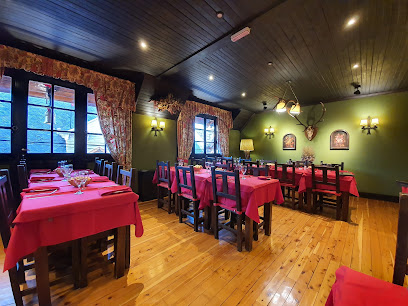
El Patacón
Experience authentic Argentinian cuisine at El Patacón in Bariloche amidst stunning mountain vistas.

Rincón Patagónico
Discover authentic Argentinian cuisine at Rincón Patagónico, where breathtaking views meet exceptional flavors in the heart of Patagonia.

Alto El Fuego - Centro
Discover the authentic taste of Argentina at Alto El Fuego – where exceptional grilling meets unforgettable flavors in Bariloche.
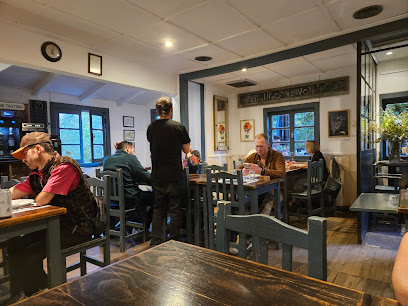
La Marca Patagónica
Experience authentic Patagonian cuisine at La Marca Patagónica in Bariloche – where local flavors meet breathtaking landscapes.

La Parrilla de Tony
Experience authentic Argentine barbecue at La Parrilla de Tony in San Carlos de Bariloche - where flavor meets tradition in every bite.

El Bodegón del Náutico
Discover authentic Argentine cuisine with stunning lake views at El Bodegón del Náutico in beautiful San Carlos de Bariloche.

El Nuevo Gaucho
Experience authentic Argentine cuisine at El Nuevo Gaucho in San Carlos de Bariloche – where tradition meets flavor!

Stag
Discover the exquisite flavors of Argentinian cuisine at Stag, overlooking the breathtaking Lago Nahuel Huapi in San Carlos de Bariloche.

Experiencia Patacon by Lucho Remiro
Discover authentic Argentine grilling at Experiencia Patacon in San Carlos de Bariloche - where every bite tells a story.

Markets, malls and hidden boutiques
Rapanui
Experience the finest handcrafted chocolates, delightful breakfasts, and a homey café ambiance at Rapanui in San Carlos de Bariloche.

Confitería del Cerro Campanario
Discover Confitería del Cerro Campanario, a charming café offering delicious treats and breathtaking views in the heart of San Carlos de Bariloche.

Delturista
Indulge in the finest chocolates and artisanal ice creams at Delturista, a must-visit café in the heart of San Carlos de Bariloche.

Shopping Patagonia
Discover a retail paradise at Shopping Patagonia, where unique shops, dining, and entertainment come together in the heart of San Carlos de Bariloche.

Galeria del sol bariloche
Explore Galeria del Sol, a dynamic shopping mall in Bariloche offering everything from high-end fashion to unique souvenirs, perfect for all travelers.

Bellevue
Experience the serene beauty of San Carlos de Bariloche at Bellevue, a charming coffee shop and tea house with breathtaking views and delightful brews.

Paila Co Salón de Tè
Discover the serene ambiance of Paila Co Salón de Té in Bariloche, where exquisite teas and delightful pastries await in a picturesque setting.

Meiling Tea House
Discover Meiling Tea House: a traditional teahouse in Bariloche, where exquisite teas and pastries await in a cozy, inviting atmosphere.

Restaurante y Minimercado Shirdi
Experience the best of local cuisine and shopping at Restaurante y Minimercado Shirdi in Bariloche, where tradition meets convenience.
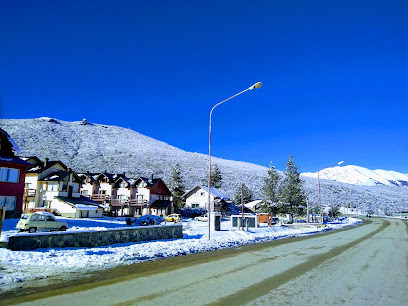
Benroth Chocolates
Discover the heavenly taste of artisanal chocolates at Benroth Chocolates, a must-visit destination for chocolate lovers in San Carlos de Bariloche.

Bäckerei
Experience the taste of Argentina at Bäckerei, a bakery in San Carlos de Bariloche offering delicious pastries and a cozy atmosphere.

Sol del Nahuel
Sol del Nahuel: A Boutique Hotel Experience Amidst the Breathtaking Landscapes of San Carlos de Bariloche.

Ahumadero Weiss
Discover the culinary delights of Ahumadero Weiss, a gourmet grocery store in Bariloche specializing in organic foods and local delicacies.

Morena Llao Llao
Discover the vibrant spirit of Patagonia at Morena Llao Llao, the ultimate clothing store for fashionable travelers in San Carlos de Bariloche.

Supermercados Todo
Explore the culinary delights of San Carlos de Bariloche at Supermercados Todo, where local flavors meet international variety.

Essential bars & hidden hideouts
Cerveza Patagonia - Cerveceria Bariloche
Discover the flavors of Patagonia at Cerveza Patagonia, a brewpub in Bariloche renowned for its craft beers and delicious local dishes.

Kunstmann
Experience the finest craft beers and delicious cuisine at Kunstmann, a brewpub nestled in the breathtaking landscapes of San Carlos de Bariloche, Argentina.

Confitería Giratoria Cerro Otto
Experience breathtaking views and delectable cuisine at Confitería Giratoria Cerro Otto, a revolving restaurant in the heart of Patagonia.
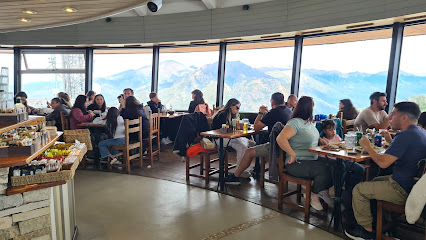
Berlina Km12
Discover the best of local craft beer and cuisine at Berlina Km12, a vibrant brewpub in the heart of Bariloche's stunning landscapes.

Manush km 4
Experience the best of Argentine craft beer at Manush km 4, a lively brewpub with stunning views of Lake Nahuel Huapi in beautiful Bariloche.

Cervecería Bachmann
Discover the best brewpub experience in Bariloche at Cervecería Bachmann, where craft beer meets delicious food in a cozy atmosphere.

Antares Bariloche
Experience the best of craft brewing and local cuisine in the heart of San Carlos de Bariloche at Antares Brewpub.

Chimi Bar de Choris
Experience the flavors of Argentina at Chimi Bar de Choris, a vibrant brewpub in San Carlos de Bariloche known for its delicious grilled dishes and craft beers.

Cervecería y Restaurante Gilbert
Discover the flavors of Patagonia at Cervecería y Restaurante Gilbert, a craft beer haven with breathtaking views and delicious local cuisine.

Ice Bariloche
Discover a unique bar experience at Ice Bariloche, where everything is made of ice in a frosty, creative atmosphere.

Stradibar
Discover the vibrant atmosphere of Stradibar in Bariloche, where craft beers and delicious gastropub cuisine come together in a cozy setting.

Cervecería Beerland Bariloche
Discover Cervecería Beerland, Bariloche's favorite brewpub, renowned for its craft beers and delicious local cuisine in a lively atmosphere.
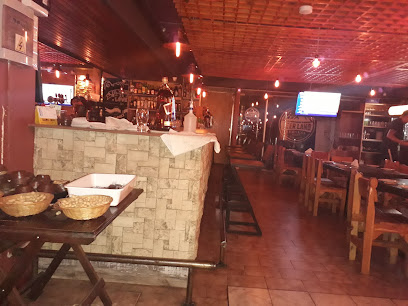
Modo Bar & Restó
Discover the lively Modo Bar & Restó in Bariloche, where delicious gastropub dishes meet unforgettable live music in a vibrant atmosphere.

Nené Bar
Discover the lively Nené Bar in San Carlos de Bariloche, where local culture meets a vibrant nightlife scene, perfect for every traveler.
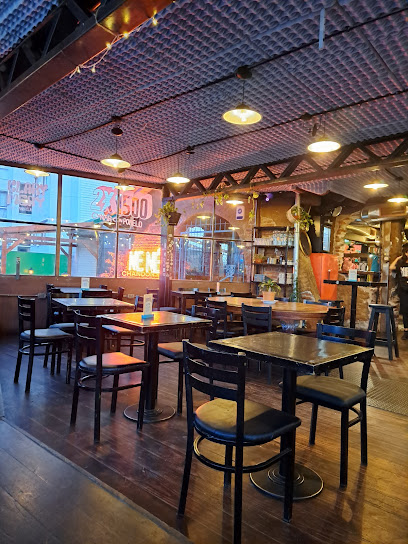
Restaurante y Minimercado Shirdi
Discover the best of local cuisine and products at Restaurante y Minimercado Shirdi in beautiful San Carlos de Bariloche.
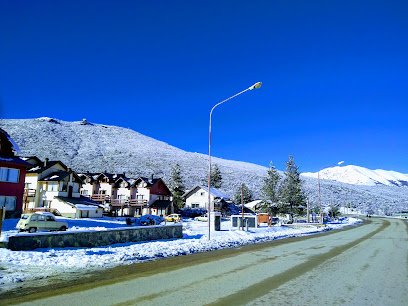
Local Phrases about Cerro Tronador
-
- HelloHola
[oh-lah] - GoodbyeAdiós
[ah-dyohs] - YesSí
[see] - NoNo
[noh] - Please/You're welcomePor favor/De nada
[por fah-vor/deh nah-dah] - Thank youGracias
[grah-syahs] - Excuse me/SorryDisculpe/Perdón
[dees-kool-peh/pehr-dohn] - How are you?¿Cómo estás?
[koh-moh ehs-tahs] - Fine. And you?Bien. ¿Y tú?
[byen. ee too] - Do you speak English?¿Hablas inglés?
[ah-blahs een-glehs] - I don't understandNo entiendo
[noh ehn-tyen-doh]
- HelloHola
-
- I'd like to see the menu, pleaseMe gustaría ver el menú, por favor
[meh goos-tah-ree-ah behr ehl meh-noo, por fah-vor] - I don't eat meatNo como carne
[noh koh-moh kahr-neh] - Cheers!¡Salud!
[sah-lood] - I would like to pay, pleaseMe gustaría pagar, por favor
[meh goos-tah-ree-ah pah-gahr, por fah-vor]
- I'd like to see the menu, pleaseMe gustaría ver el menú, por favor
-
- Help!¡Ayuda!
[ah-yoo-dah] - Go away!¡Vete!
[veh-teh] - Call the Police!¡Llama a la Policía!
[yah-mah ah lah poh-lee-see-ah] - Call a doctor!¡Llama a un médico!
[yah-mah ah oon meh-dee-koh] - I'm lostEstoy perdido
[ehs-toy pehr-dee-doh] - I'm illEstoy enfermo
[ehs-toy ehn-fehr-moh]
- Help!¡Ayuda!
-
- I'd like to buy...Me gustaría comprar...
[meh goos-tah-ree-ah kohm-prahr] - I'm just lookingSólo estoy mirando
[soh-loh ehs-toy mee-rahn-doh] - How much is it?¿Cuánto cuesta?
[kwan-toh kwehs-tah] - That's too expensiveEsto es muy caro
[ehs-toh ehs moo-ee kah-roh] - Can you lower the price?¿Puede bajar el precio?
[pweh-deh bah-har ehl pree-syoh]
- I'd like to buy...Me gustaría comprar...
-
- What time is it?¿Qué hora es?
[keh oh-rah ehs] - It's one o'clockEs la una
[ehs lah oo-nah] - Half past (10)Las diez y media
[lahs dyehs ee meh-dyah] - MorningMañana
[mah-nyah-nah] - AfternoonTarde
[tahr-deh] - EveningNoche
[noh-cheh] - YesterdayAyer
[ah-yehr] - TodayHoy
[oy] - TomorrowMañana
[mah-nyah-nah] - 1Uno
[oo-noh] - 2Dos
[dohs] - 3Tres
[trehs] - 4Cuatro
[kwah-troh] - 5Cinco
[seen-koh] - 6Seis
[says] - 7Siete
[syeh-teh] - 8Ocho
[oh-choh] - 9Nueve
[nweh-veh] - 10Diez
[dyehs]
- What time is it?¿Qué hora es?
-
- Where's a/the...?¿Dónde está...?
[dohn-deh ehs-tah] - What's the address?¿Cuál es la dirección?
[kwahl ehs lah dee-rehk-syohn] - Can you show me (on the map)?¿Puedes mostrarme (en el mapa)?
[pweh-dehs mohs-trahr-meh (ehn ehl mah-pah)] - When's the next (bus)?¿Cuándo es el próximo (autobús)?
[kwan-doh ehs ehl prohk-see-moh (ow-toh-boos)] - A ticket (to ....)Un boleto (a ...)
[oon boh-leh-toh (ah ...)]
- Where's a/the...?¿Dónde está...?
History of Cerro Tronador
-
Cerro Tronador, a dormant stratovolcano, is located on the border between Argentina and Chile. It stands at 3,491 meters and was formed during the Andean orogeny, a geological process that involved the subduction of the Nazca Plate beneath the South American Plate. This process, occurring over millions of years, has given rise to the dramatic landscapes and towering peaks that define the region today.
-
The Mapuche people, the indigenous inhabitants of the region, have a deep connection to Cerro Tronador. They refer to it as 'Tronador' due to the thunderous sounds of the avalanches and ice falls, which they believed were the voices of their ancestors. The mountain holds spiritual significance for the Mapuche, who have lived in the area for centuries and continue to maintain their cultural traditions and practices.
-
The first recorded ascent of Cerro Tronador was made by a German explorer, Hermann Claussen, in 1934. The name 'Tronador', meaning 'Thunderer' in Spanish, was given due to the frequent sounds of ice falling from its glaciers, which resemble the rumble of thunder. This period marked the beginning of increased scientific and exploratory interest in the region.
-
Cerro Tronador is a part of Nahuel Huapi National Park, the oldest national park in Argentina, established in 1934. The park was created to preserve the natural beauty and biodiversity of the area, which includes not only the majestic Tronador but also vast forests, lakes, and diverse wildlife. The park's establishment was a significant step in the conservation movement in Argentina.
-
In recent decades, Cerro Tronador has become a focal point for studies on glacial retreat and climate change. The mountain's glaciers, such as the Castaño Overo and the Manso, have been receding, providing critical data on the impacts of global warming. These changes have significant implications for the local ecosystems and water resources, making Cerro Tronador an important site for environmental research.
-
Cerro Tronador has become a popular destination for adventure tourism, attracting hikers, climbers, and nature enthusiasts from around the world. The mountain offers a range of outdoor activities, from glacier trekking to bird watching. The nearby town of San Carlos de Bariloche serves as a gateway to the region, providing amenities and services for tourists exploring the majestic landscapes of Cerro Tronador.
Cerro Tronador Essentials
-
Cerro Tronador is located in the Andean mountain range on the border between Argentina and Chile, near the city of San Carlos de Bariloche in the Río Negro Province. The nearest airport is San Carlos de Bariloche Airport (BRC), which is well-connected to major Argentine cities like Buenos Aires and Córdoba. From Bariloche, you can reach Cerro Tronador by renting a car or taking a bus or private tour that heads towards Pampa Linda, the base area for accessing the mountain.
-
Once in Bariloche, the most common way to reach Cerro Tronador is by car. The drive to Pampa Linda takes about 2-3 hours, depending on road conditions. There are also organized tours that provide transportation to and from the mountain. Public buses are less frequent and may not offer direct routes to Pampa Linda, so renting a car or joining a tour is advisable for convenience.
-
The official currency in Argentina is the Argentine Peso (ARS). While credit cards are widely accepted in Bariloche, it is recommended to carry cash for smaller transactions, especially in remote areas like Pampa Linda. ATMs are available in Bariloche, but may be scarce in more rural areas, so plan accordingly by withdrawing sufficient cash before heading out to Cerro Tronador.
-
Cerro Tronador and its surrounding areas are generally safe for tourists. However, it's important to prepare adequately for mountain conditions, as weather can change rapidly. Ensure you have proper gear, sufficient food and water, and check weather forecasts before embarking on hikes. While there are no specific high-crime areas, it's always wise to stay vigilant and keep an eye on your belongings. Avoid hiking alone and always inform someone of your plans.
-
In case of an emergency, you can dial 911 for immediate assistance. Medical facilities are available in Bariloche. It is highly recommended to have travel insurance that covers medical emergencies and mountain rescue. For minor injuries or health issues, there are pharmacies in Bariloche where you can purchase necessary medications. Always carry a first-aid kit when hiking.
-
Fashion: Do wear appropriate hiking gear, including sturdy boots and weather-appropriate clothing. Avoid wearing flip-flops or sandals on trails. Religion: While there are no specific religious customs to observe in Cerro Tronador, always show respect for nature and local traditions. Public Transport: Do be patient as public transport can be infrequent. It's often better to rent a car for flexibility. Greetings: Do greet people with a friendly 'Hola' or 'Buen día.' Argentinians are generally warm and welcoming. Eating & Drinking: Do try local specialties like Patagonian lamb and trout. Don't forget to bring enough food and water for your hikes, as there are limited facilities in remote areas.
-
To experience Cerro Tronador like a local, plan your visit for the shoulder seasons (spring and autumn) to avoid the summer crowds. Take the time to explore the lesser-known trails and viewpoints around the mountain. Engage with local guides who can offer a wealth of knowledge about the area's natural history and wildlife. Visit nearby attractions like the Black Glacier (Ventisquero Negro) and the stunning waterfalls of the Alerces Cascade. Respect the natural environment by following Leave No Trace principles.
Trending Landmarks in Cerro Tronador
Nearby Cities to Cerro Tronador
-
Things To Do in San Carlos de Bariloche
-
Things To Do in Puerto Varas
-
Things To Do in Osorno
-
Things To Do in Valdivia
-
Things To Do in Pucon
-
Things To Do in Temuco
-
Things To Do in Concepción
-
Things To Do in Curicó
-
Things To Do in Rancagua
-
Things To Do in San Rafael
-
Things To Do in Santiago
-
Things To Do in Valparaíso
-
Things To Do in Viña del Mar
-
Things To Do in Mendoza
-
Things To Do in El Calafate







